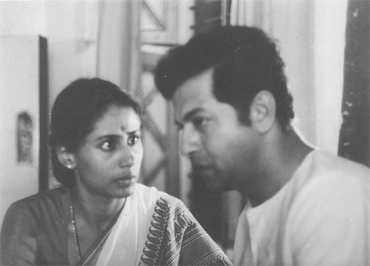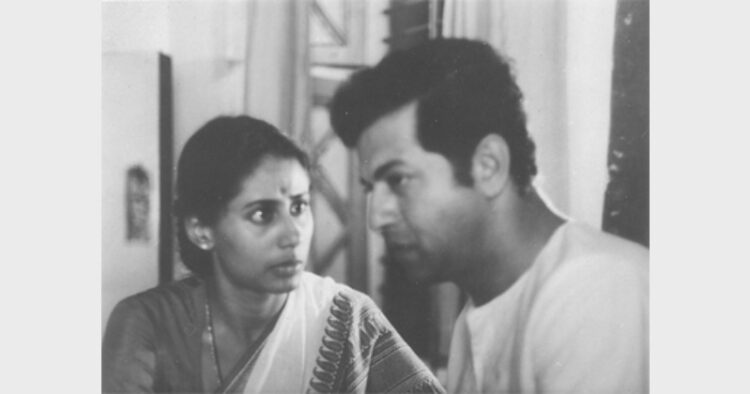Marathi Cinema: A journey from Raja Harishchandra to Harishchandrachi Factory
 Marathi Cinema is the oldest and a pioneer film industry in India. The first Marathi still picture movie released in India was Shree Pundalik by Dadasaheb Torne on 18 May 1912 at Coronation Cinematograph, Mumbai. It was performed by a Marathi crew performing Marathi and Sanskrit musicals plays in Marathi at that period. The first Marathi talkie film, Ayodhyecha Raja, was released in 1932, just one year after Alam Ara the first Hindi talkie.
Marathi Cinema is the oldest and a pioneer film industry in India. The first Marathi still picture movie released in India was Shree Pundalik by Dadasaheb Torne on 18 May 1912 at Coronation Cinematograph, Mumbai. It was performed by a Marathi crew performing Marathi and Sanskrit musicals plays in Marathi at that period. The first Marathi talkie film, Ayodhyecha Raja, was released in 1932, just one year after Alam Ara the first Hindi talkie.
Raja Harishchandra directed by Dadasaheb Phalke is also considered as a Marathi film because of its cast and crew. His Hindustan Films founded in Nashik produced 95 movies and 26 short films in his career spanning 19 years, including his most noted works: Mohini Bhasmasur (1913), Satyavan Savitri (1914), Lanka Dahan (1917), Shri Krishna Janma (1918) and Kaliya Mardan (1919).
In 1919 Baburao Mistry — popularly known as Baburao Painter — formed the Maharashtra Film Company with the blessings of the Maharaja of Kolhapur. Because of his special interest in sets, costumes, design and painting, he chose episodes from Maratha history for interpreting in the new medium and specialised in the historical genre.
The Rise of Prabhat Films
As cinema grew in Union of India, one of the major production houses that made long lasting impact on cinema was the Prabhat Film Company. Prabhat’s Sant Tukaram was the first Indian work to win the Best Film Award at the Venice film festival in 1937. In 1954 at the very first edition of the National Awards, Shyamchi Aai another Marathi film, won the first President’s Gold Medal for cinema. V Shantaram who started his directorial career in Prabhat films where he produced classics like Kunku, Shejari, Manus etc. Later he founded his own banner, Rajkamal Pictures, and produced a series of innovative films such as Jhanak Jhanak Payal Baje, Do Ankhen Barah Haath, etc. which are known as evergreen movies till date.
The Golden Era
The tradition of Prabhat was followed by Raja Paranjpe, Dinkar D Patil, GD Madgulkar and Sudhir Phadke, which is also known as golden era of Marathi films. The 1960s saw the emergence of directors like Anant Mane who made Marathi films based on the folk art form Tamasha. Then came directors like Datta Dharmadhikari and Raj Dutt who made traditional family dramas. The early 70s saw the advent of Dada Kondke who captured the audiences with his sense of humour. All these efforts were greatly supported by musicians like Shrinivas Khale and Ram Marathe who gave best of the songs in voice from Lata Mangeshkar – Asha Bhosle to Shankar Mahadevan.
The 1980s saw two comedy heroes catapult to stardom, Ashok Saraf and Laxmikant Berde and it was given new direction by two young actors turned directors, Mahesh Kothare and Sachin Pilgaonkar, made entertaining family movies.
For a couple of decades, Marathi Cinema declined, primarily due to geographical proximity to Bollywood, which many believe encroached on the identity of Marathi Cinema. Other reasons include the shortage of cinema halls for distribution due to poor marketing, lack of money magnets, a vibrant theatre scene and the emergence of private television.
The Decline and Revival
However, in the past few years, Marathi Cinema has been revived and received great appreciation for bringing in fresh ideas and deeper human sensitivity onto celluloid. Shwaas (2004) bagged the National Award for the best film and was also India’s official entry to the 77th Academy Awards.
In 2009, Marathi film Harishchandrachi Factory (With budget Rs 6 Crore), depicting the struggle of Dadasaheb Phalke in making Raja Harishchandra in 1913, India’s first feature film, directed by theatre-veteran Paresh Mokashi was selected as India’s official entry to Academy Award in the Best Foreign Language Film Category, making it the second Marathi film, after Shwaas, to receive this honour.
In the year 2009 released the blockbuster musical movie Natarang, which got both commercial and critical applause and has served as a path-breaking movie for Marathi Cinema in many ways.
In the last few years released Vihir (Umesh Kulkarni), Zenda (Avdhoot Gupte), Jhing Chik Jhing (Nitin Nandan), Pratisaad – The Response (Yogesh Dattatraya Gosavi), Mumbai – Pune – Mumbai (Satish Rajwade), Paaradh (Gajendra Ahire) had given different direction to Marathi films. —Prasad Joshi
Establish socially bad as bad and good as good
—Rajdutt, Renowned Director of Marathi Cinema
“It is a matter of pride that the first movie and movie maker was Marathi. The Marathi film industry presented a model of depicting social issues and pain in the society through cinema. Earlier producers-directors were well aware of the art of making movies for the society. They tried to present different social problems through a story line. As Sant Eknath in bhakti movement used the Bharud, a folk song tradition, to spread spiritualism, similarly, Marathi film makers used entertainment to influence the thought process.
Today the picture is changed. It is more business and less commitment. The essence of Sanskars associated with Bharatiya is nowadays missing in films.
The cinema should establish socially bad as bad and good as good. The culture of V Shantaram and Baburao Painter is vanishing.
We are heading towards ‘self centered materialism’. The things are shrinking into ‘me’ and ‘mine’. This reality should be critically projected through movies and the resourceful persons should stand by people who want to take this initiative. Then only Indian Cinema will remain Indian and serve its purpose.”




![A Representative image [ANI Photo]](https://organiser.org/wp-content/uploads/2025/12/representative-image-e1765612818961-120x70.webp)








Comments